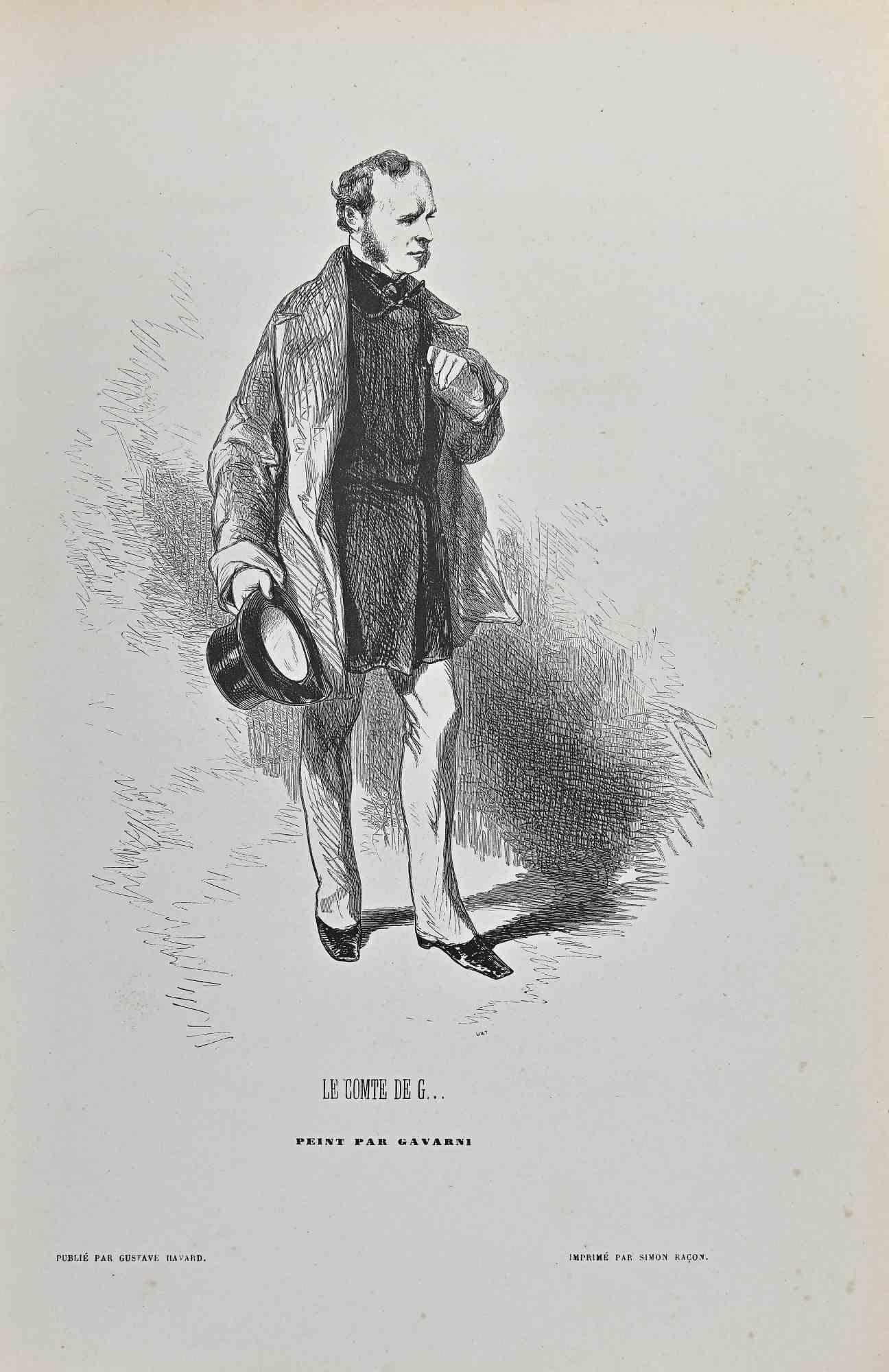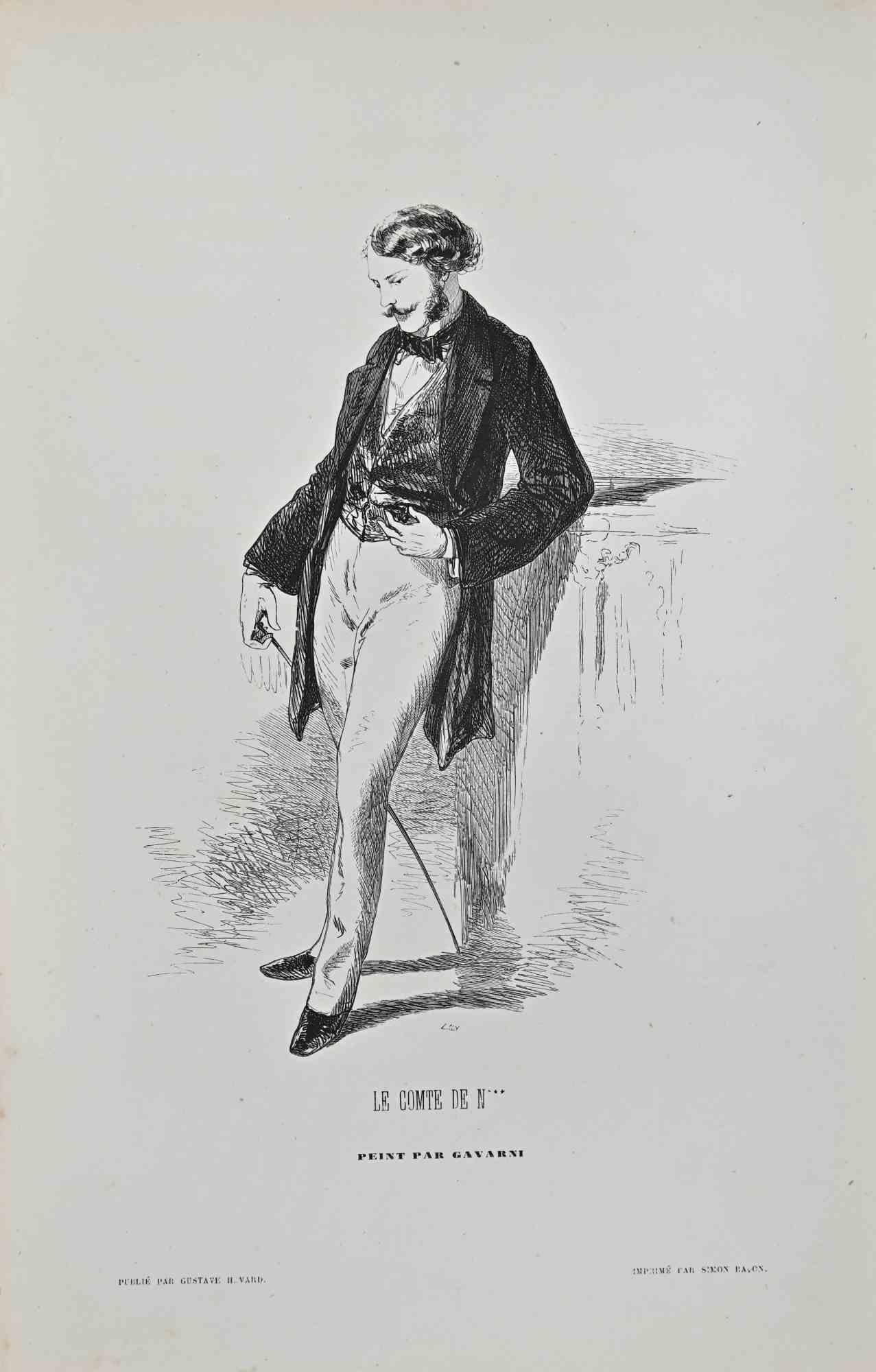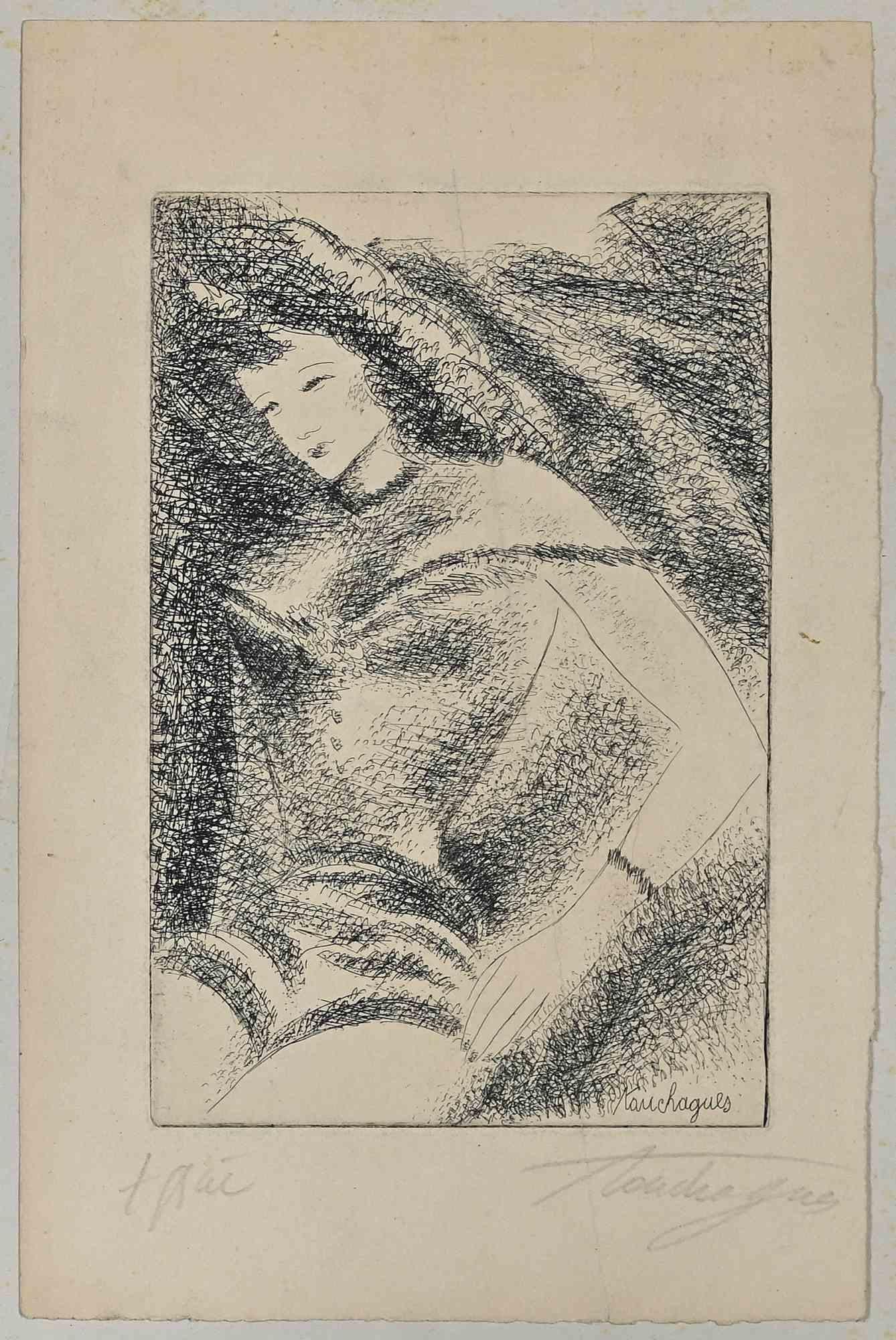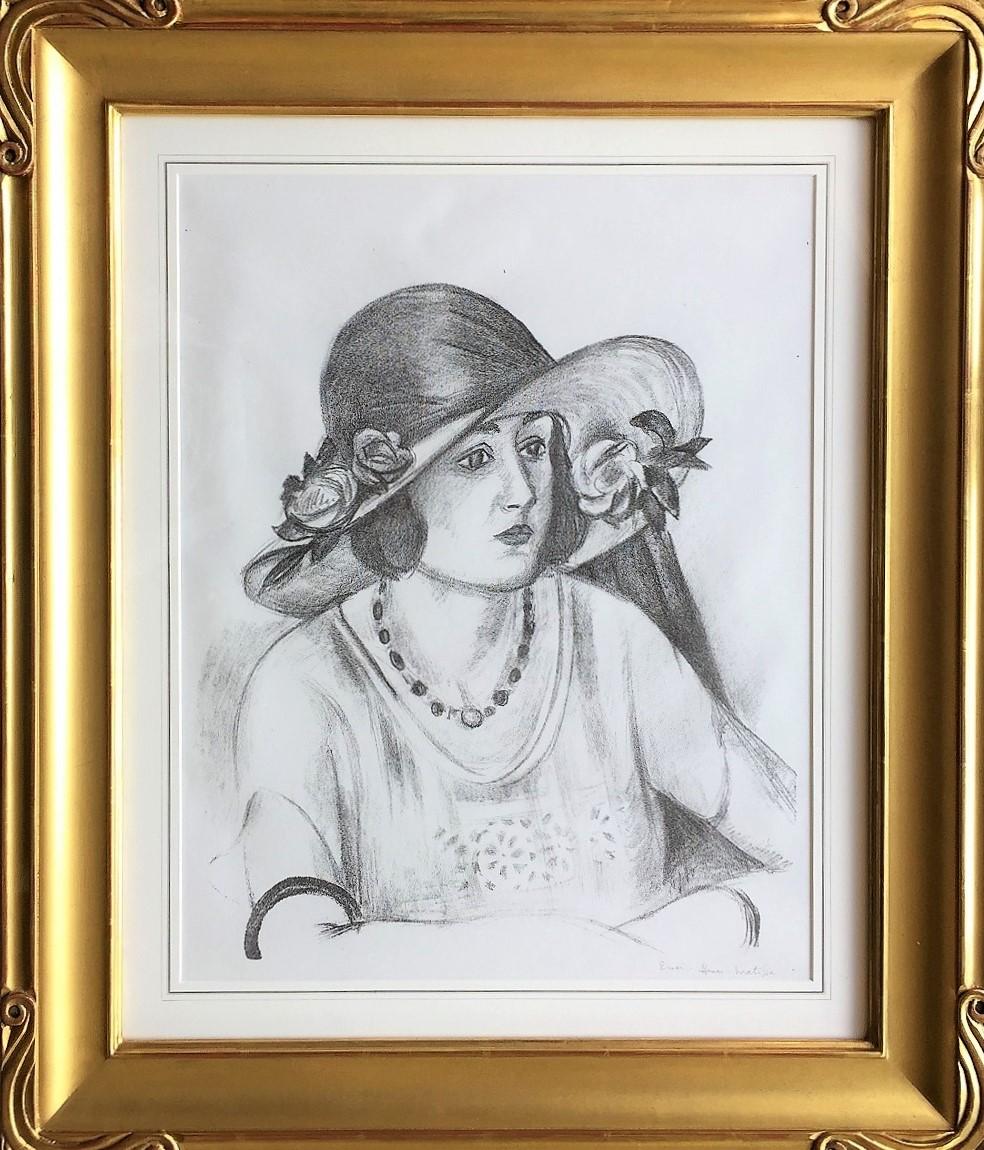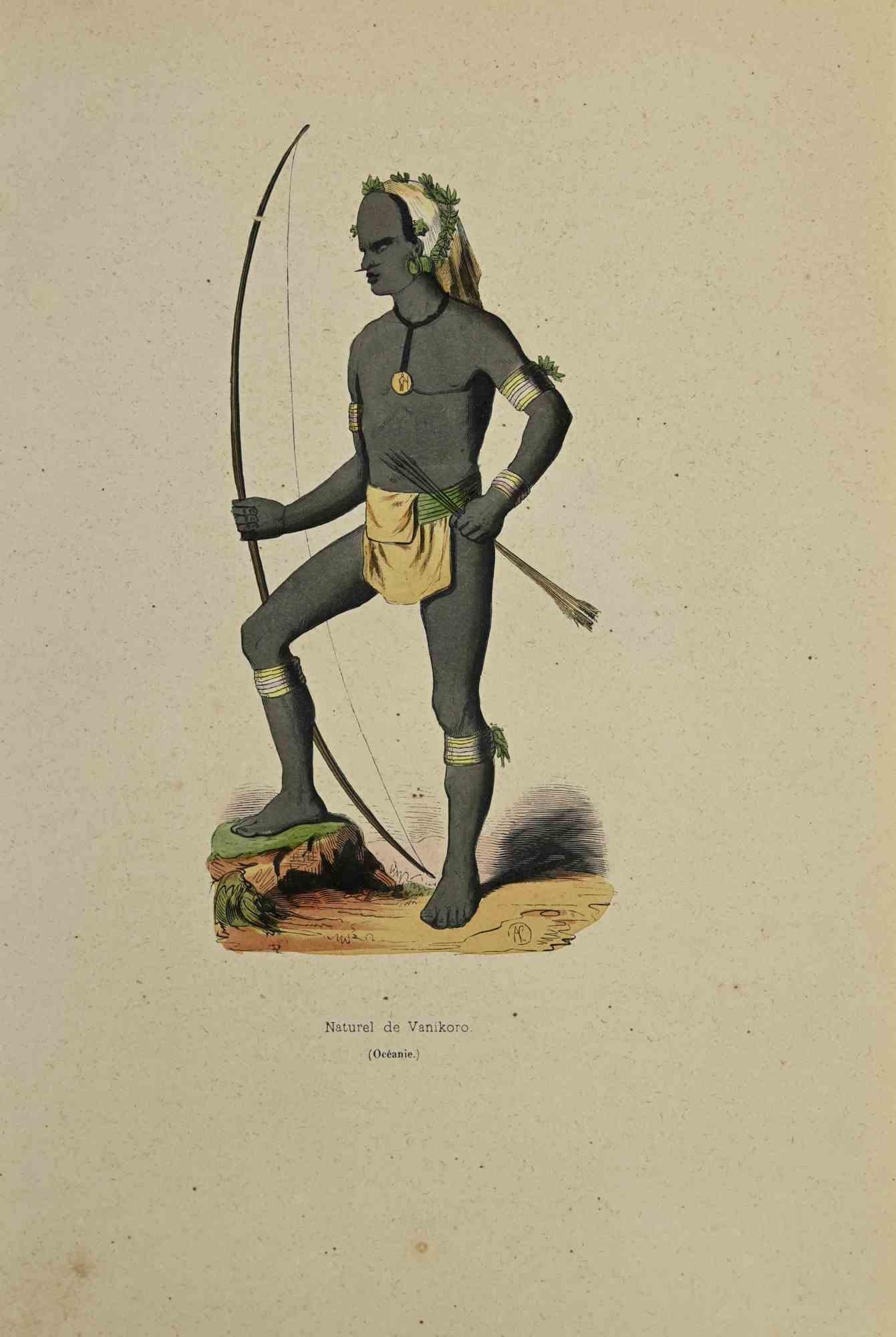Moise KislingMoise Kisling - Woman - Etching1940s
1940s
About the Item
- Creator:Moise Kisling (1891 - 1953, French, Polish)
- Creation Year:1940s
- Dimensions:Height: 14.97 in (38 cm)Width: 11.03 in (28 cm)Depth: 0.04 in (1 mm)
- Movement & Style:
- Period:
- Condition:
- Gallery Location:Collonge Bellerive, Geneve, CH
- Reference Number:1stDibs: LU16122868501
Moïse Kisling was born Mojżesz Kisling in 1891 in Kraków, which was part of the Austro-Hungarian Empire. He studied at the School of Fine Arts in Kraków, where his teachers included Jozef Pankiewicz, a fervent admirer of Auguste Renoir and the French Impressionists who encouraged him to travel to Paris, the international centre for artistic creativity in the early 20th century.
In 1910, Kisling moved to Montmartre in Paris, and a few years later to Montparnasse, where he lived for the next 27 years and became part of an émigré community that included the artists Amedeo Modigliani, Georges Braque, Pablo Picasso, Jules Pascin, Max Jacob, André Salmon and Chaïm Soutine. Jules Pascin and later Amedeo Modigliani lived in the same building, and Modigliani painted a portrait of him in 1916 (it is held in the collection of the Musée d'Art Moderne de la Ville de Paris).
Kisling’s style used in painting landscapes is similar to that of Marc Chagall and, a master at depicting the female body, his surreal nudes and portraits earned him the widest acclaim.
At the outbreak of World War I, Kisling volunteered for service in the French Foreign Legion, and in 1915 he was seriously wounded in the Battle of the Somme, for which he was awarded French citizenship.
Kisling volunteered for army service again in 1940 during World War II, although he was 49. When the French Army was discharged at the time of the surrender to the Germans, Kisling emigrated to the United States, as he rightly feared for his safety as a Jew in occupied France. He exhibited in New York and Washington and then settled in California, where he lived until 1946.
Moïse Kisling returned to France after the war and defeat of Germany and died in 1953 in Sanary-sur-Mer, Var, Provence-Alpes-Côte d'Azur, France where a residential street in the town is named after him.
(Biography provided by Stern Pissarro Gallery)
- ShippingRetrieving quote...Ships From: Collonge Bellerive, Geneve, Switzerland
- Return PolicyA return for this item may be initiated within 7 days of delivery.
- Pablo Picasso - Painter and His Model - Original LithographBy Pablo PicassoLocated in Collonge Bellerive, Geneve, CHPablo Picasso - Original Lithograph Title: Painter and his Model Edition of 180 From the book "Regards sur Paris" (Paris: Andre Sauret, 1962) Unsigned, as issued Dimensions: 39 x 30 cm References: Mourlot 354, Bloch 1035 Pablo Picasso Picasso is not just a man and his work. Picasso is always a legend, indeed almost a myth. In the public view he has long since been the personification of genius in modern art. Picasso is an idol, one of those rare creatures who act as crucibles in which the diverse and often chaotic phenomena of culture are focussed, who seem to body forth the artistic life of their age in one person. The same thing happens in politics, science, sport. And it happens in art. Early life Born in Malaga, Spain, in October of 1881, he was the first child born in the family. His father worked as an artist, and was also a professor at the school of fine arts; he also worked as a curator for the museum in Malaga. Pablo Picasso studied under his father for one year, then went to the Academy of Arts for one year, prior to moving to Paris. In 1901 he went to Paris, which he found as the ideal place to practice new styles, and experiment with a variety of art forms. It was during these initial visits, which he began his work in surrealism and cubism style, which he was the founder of, and created many distinct pieces which were influenced by these art forms. Updates in style During his stay in Paris, Pablo Picasso was constantly updating his style; he did work from the blue period, the rose period, African influenced style, to cubism, surrealism, and realism. Not only did he master these styles, he was a pioneer in each of these movements, and influenced the styles to follow throughout the 20th century, from the initial works he created. In addition to the styles he introduced to the art world, he also worked through the many different styles which appeared, while working in Paris. Not only did he continually improve his style, and the works he created, he is well known because of the fact that he had the ability to create in any style which was prominent during the time. Russian ballet In 1917, Pablo Picasso joined the Russian Ballet, which toured in Rome; during this time he met Olga Khoklova, who was a ballerina; the couple eventually wed in 1918, upon returning to Paris. The couple eventually separated in 1935; Olga came from nobility, and an upper class lifestyle, while Pablo Picasso led a bohemian lifestyle, which conflicted. Although the couple separated, they remained officially married, until Olga's death, in 1954. In addition to works he created of Olga, many of his later pieces also took a centralized focus on his two other love interests, Marie Theresa...Category
1960s Modern Portrait Prints
MaterialsLithograph
- Jean Cocteau - Original LithographBy Jean CocteauLocated in Collonge Bellerive, Geneve, CHUntitled Original Lithograph by Jean Cocteau with the printed signature, as issued Dimensions: 40 x 30 cm Including artist's stamp Jean Cocteau Writer, artist and film director Je...Category
1950s Modern Figurative Prints
MaterialsLithograph
- Jean Cocteau - Young Woman - DrawingBy Jean CocteauLocated in Collonge Bellerive, Geneve, CHJean Cocteau - Young Woman - Drawing Circa 1912 27 x 21 cm Unsigned With an attestation of authenticity by Annie Guédras, Jean Cocteau Writer, artist and film director Jean Cocte...Category
1920s Modern Figurative Prints
MaterialsInk
- Marc Chagall - Revolution - Original 1960s Poster for Galiera MuseumBy Marc ChagallLocated in Collonge Bellerive, Geneve, CHafter Marc CHAGALL (1887 - 1985) Poster for "Les peintres témoins de leur temps Musée Galiera" 1963 Created by Charles Sorlier after Chagall's 1937 painting...Category
1960s Modern Figurative Prints
- Jean Dubuffet - original lithograph from XXe Siecle magazineBy Jean DubuffetLocated in Collonge Bellerive, Geneve, CHJean Dubuffet - Original Lithograph from XXe Siecle magazine 1958 Dimensions: 32 x 25 cm Edition: G. di San Lazzaro. Unsigned and unumbered as issuedCategory
1960s Modern Figurative Prints
MaterialsLithograph
- Alexander Calder - Original Lithograph - Behind the MirrorBy Alexander CalderLocated in Collonge Bellerive, Geneve, CHAlexander Calder - Original Lithograph - Behind the Mirror Original lithographs produced in 1976 Dimensions: 38 x 56 cm Source: Derrière le miroir (...Category
1970s Modern Portrait Prints
MaterialsLithograph
- La Capeline de Paille d'Italie (The Italian Straw Hat).By Henri MatisseLocated in Storrs, CTLa Capeline de Paille d'Italie (The Italian Straw Hat). 1923. Lithograph. Duthuit 430. 17 3/4 x 15 3/4 (sheet 23 1/8 x 17 7/8). Trial proof, apart fr...Category
Early 20th Century Modern Portrait Prints
MaterialsLithograph
- Femme de Jalapa - Lithograph by Auguste Wahlen - 1844Located in Roma, ITFemme de Jalapa is a hand colored lithographs realized by Auguste Wahlen in 1844. Good conditions. The artwork belongs to the Suite Moeurs, usages et costumes de tous les peuples ...Category
1840s Modern Figurative Prints
MaterialsLithograph
- Naturel de Vanikoro - Lithograph by Auguste Wahlen - 1844Located in Roma, ITNaturel de Vanikoro is a hand colored lithographs realized by Auguste Wahlen in 1844. good conditions. the artwork belongs to the Suite Moeurs, usages et costumes de tous les peupl...Category
1840s Modern Figurative Prints
MaterialsLithograph
- The Posing Woman - Original Lithograph by Louis Touchagues - Mid-20th centuryBy Louis TouchaguesLocated in Roma, ITThe Posing Woman is an Original lithograph realized by Louis Touchagues in the mid 20th Century. Hand-signed on the lower by the artist and signed on the plate. Included a Passepar...Category
Mid-20th Century Modern Portrait Prints
MaterialsLithograph
- Le Comte De N - Lithograph By Paul Gavarni - mid 19th centuryBy Paul GavarniLocated in Roma, ITLe Comte De N is a lithograph on ivory-colored paper, realized by the French draftsman Paul Gavarni (alias Guillaume Sulpice Chevalier Gavarni, 1804-1866) in the mid-19th Century. S...Category
Mid-19th Century Modern Figurative Prints
MaterialsLithograph
- Le Comte De G - Lithograph By Paul Gavarni - mid 19th centuryBy Paul GavarniLocated in Roma, ITLe Comte De G is a lithograph on ivory-colored paper, realized by the French draftsman Paul Gavarni (alias Guillaume Sulpice Chevalier Gavarni, 1804-1866) in the mid-19th Century. S...Category
Mid-19th Century Modern Figurative Prints
MaterialsLithograph
